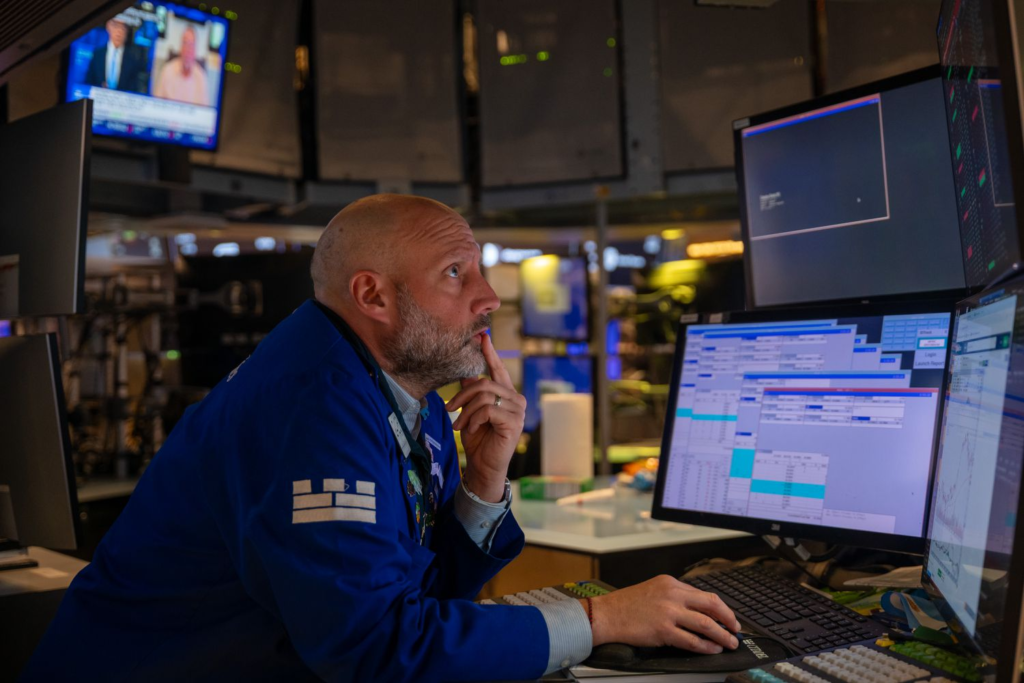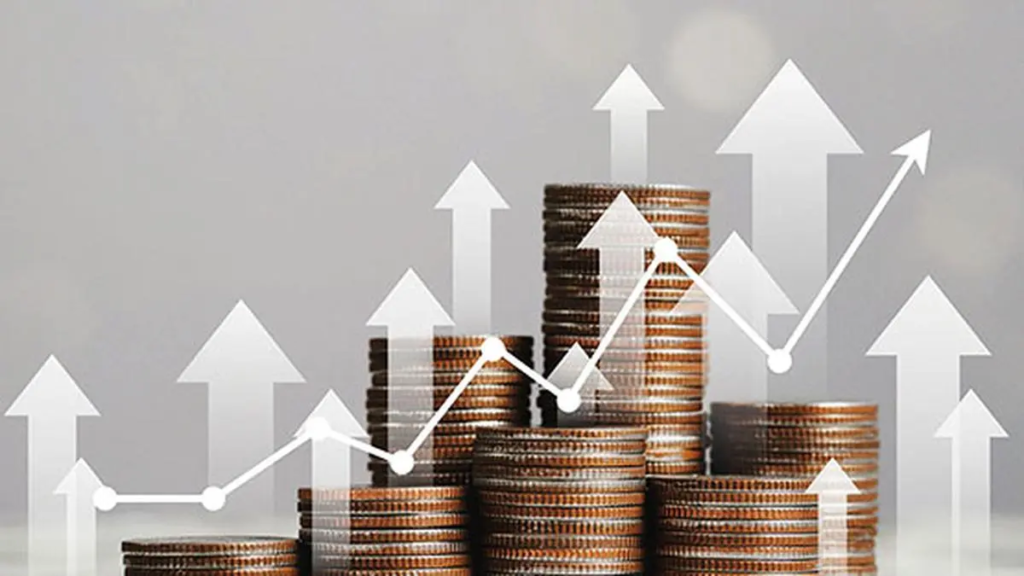In a remarkable rebound, the Dow Jones Industrial Average soared 740.58 points, a 1.78% gain, Trade closing at 42,343.65 on Tuesday, May 27, 2025. This surge marked the index’s best single-day performance of the year, snapping a four-day losing streak and signaling renewed investor confidence. The rally was fueled by news that President Donald Trump delayed a proposed 50% tariff on European Union imports, easing fears of escalating trade tensions. The broader market also joined the upswing, with the S&P 500 climbing 2.05% to 5,921.54 and the Nasdaq Composite gaining 2.5%. This article explores the factors behind this market surge, its implications for investors, and what lies ahead for the U.S. economy.

A Turnaround Driven by Trade Optimism
The stock market’s robust performance came on the heels of President Trump’s announcement over the holiday weekend that he would postpone imposing steep tariffs on EU goods, originally set to take effect on June 1, 2025. This decision followed stalled trade talks with the EU, which had initially rattled markets when Trump signaled a hardline stance. Reports from the White House clarified that the president’s earlier tariff threats were not formal policy, calming investor nerves. According to CNBC, this delay lifted market sentiment, as traders saw it as a step toward de-escalating trade disputes that have weighed heavily on global markets throughout 2025.
The decision to delay tariffs was particularly significant given the recent volatility in U.S. markets. Just days earlier, on May 23, the Dow had dropped 181 points as Trump’s tariff rhetoric targeted not only the EU but also companies like Apple. The renewed optimism on Tuesday reflected a broader market belief that trade negotiations could progress without immediate punitive measures. This shift was a welcome relief after months of uncertainty driven by Trump’s trade policies, which have oscillated between aggressive tariff threats and diplomatic overtures.
Sector Performance and Market Breadth
The rally was broad-based, with small-cap stocks leading the charge. The Russell 2000, a key index for small-cap companies, climbed 1.7% in late morning trading, bringing its monthly gain to over 5%. Despite this, the index remains down approximately 7% for the year, reflecting the challenges smaller companies face in a high-interest-rate environment and amid trade uncertainties. Larger indices like the S&P 500 and Nasdaq also saw strong gains, driven by sectors sensitive to trade developments.
Retail and consumer discretionary stocks were among the standout performers. Companies like Amazon, which had faced pressure from Trump’s trade policies, saw shares rise over 7% earlier in May following a temporary U.S.-China trade truce. On Tuesday, the positive momentum continued as investors bet on improved consumer spending and stabilized supply chains. Travel-related stocks, such as Delta Air Lines and American Airlines, also benefited, with gains exceeding 5% in prior sessions, signaling optimism about global economic recovery.

However, not all companies shared in the rally’s success. PDD Holdings, the U.S.-listed parent of Chinese retailer Temu, saw its shares plummet more than 20% after reporting disappointing first-quarter earnings. The company’s revenue of 95.67 billion yuan ($13.28 billion) fell short of analyst expectations, highlighting ongoing U.S.-China trade tensions despite recent progress. This underscores the uneven impact of trade policies on individual firms, particularly those with significant exposure to Chinese markets.
Broader Economic Context
The market’s reaction to the tariff delay was amplified by positive economic indicators. A strong Consumer Confidence report released on Tuesday further bolstered investor sentiment. The Conference Board’s Consumer Confidence Index rose to its highest level in months, reflecting growing optimism among U.S. consumers about the economy’s trajectory. This data, combined with the tariff reprieve, suggested that the U.S. economy might avoid the recessionary pressures some analysts had feared earlier in the year.
Earlier in May, a 90-day U.S.-China trade truce had already sparked a significant market rally, with the Dow jumping over 1,100 points on May 12. That agreement, which included mutual tariff rollbacks, had eased fears of a global economic slowdown. Oxford Economics lowered its recession odds to 35% following the truce, citing reduced trade-related risks. The latest EU tariff delay builds on this momentum, offering hope that further negotiations could stabilize international trade.
However, challenges remain. The U.S. trade deficit hit a record high in March 2025 as businesses stockpiled imports to beat anticipated tariffs, dragging first-quarter GDP into negative territory for the first time in three years. Additionally, the yield on the 30-year U.S. Treasury bond reached 5.161% last week, its highest since October 2023, reflecting investor concerns about Trump’s fiscal policies, including his proposed tax bill. These factors suggest that while the tariff delay is a positive development, the broader economic landscape remains complex.
Investor Sentiment and Volatility
The market’s rally was accompanied by a notable decline in volatility. The CBOE Volatility Index (VIX), often referred to as Wall Street’s “fear gauge,” dropped significantly on Tuesday, moving away from its high of 60.13 in early April when trade tensions peaked. CNN’s Fear and Greed Index shifted into “greed” territory, indicating a surge in risk appetite among investors. This shift was evident in the performance of riskier assets, such as small-cap stocks and luxury goods makers like LVMH and Hermès, which had previously suffered under tariff pressures but rebounded sharply.
Despite the optimism, analysts caution that the market’s gains may be fragile. UBS’s global wealth management team noted that while recent trade developments are encouraging, they may not be sufficient to maintain market stability in the long term. The Federal Reserve’s monetary policy decisions also loom large, with markets pricing in two 25-basis-point rate cuts by the end of 2025. Federal Reserve Chair Jerome Powell’s upcoming press conference is expected to provide further clarity on the central bank’s stance, particularly regarding the balance between inflation and economic growth.

Global Market Response
The positive sentiment extended beyond U.S. borders. International markets climbed on Tuesday, reflecting relief over the easing of trade tensions. Asian markets, such as Hong Kong’s Hang Seng index, had already risen 3% on May 12 following the U.S.-China truce, and European indices like the Stoxx Europe 600 saw gains as the EU tariff threat receded. The global rally underscores the interconnected nature of trade policies and their impact on financial markets worldwide.
However, European banks like Deutsche Bank and HSBC experienced declines last week due to tariff-related concerns, highlighting the sector’s vulnerability to trade disruptions. The delay in EU tariffs offers a reprieve, but ongoing negotiations will be critical to sustaining this momentum. U.S. Treasury Secretary Scott Bessent, who played a key role in recent trade talks with China, indicated that further discussions with the EU are expected in the coming weeks, potentially leading to a more comprehensive agreement.
What’s Next for Investors?
For investors, the Dow’s 740-point surge offers a moment of optimism, but caution is warranted. The market’s reaction to the tariff delay reflects hope for continued de-escalation, but Trump’s unpredictable trade policies could reintroduce volatility. Analysts recommend focusing on sectors less exposed to trade risks, such as technology and healthcare, while monitoring companies with significant international supply chains.
The broader economic outlook hinges on several factors: ongoing trade negotiations, Federal Reserve policy, and corporate earnings. With inflation pressures easing—April’s Producer Price Index fell 0.5%—and consumer confidence improving, there are signs of resilience in the U.S. economy. However, the potential for renewed tariff threats or geopolitical tensions could disrupt this progress.
For now, the Dow’s best day of 2025 serves as a reminder of the market’s sensitivity to trade developments and the importance of diplomatic efforts in maintaining economic stability. Investors will be closely watching upcoming trade talks and economic data releases to gauge whether this rally marks the beginning of a sustained recovery or a temporary reprieve in a turbulent year.
Must Read :- U.S. Delays 50% EU Tariffs Until July 9 After Trump-Von der Leyen Call





